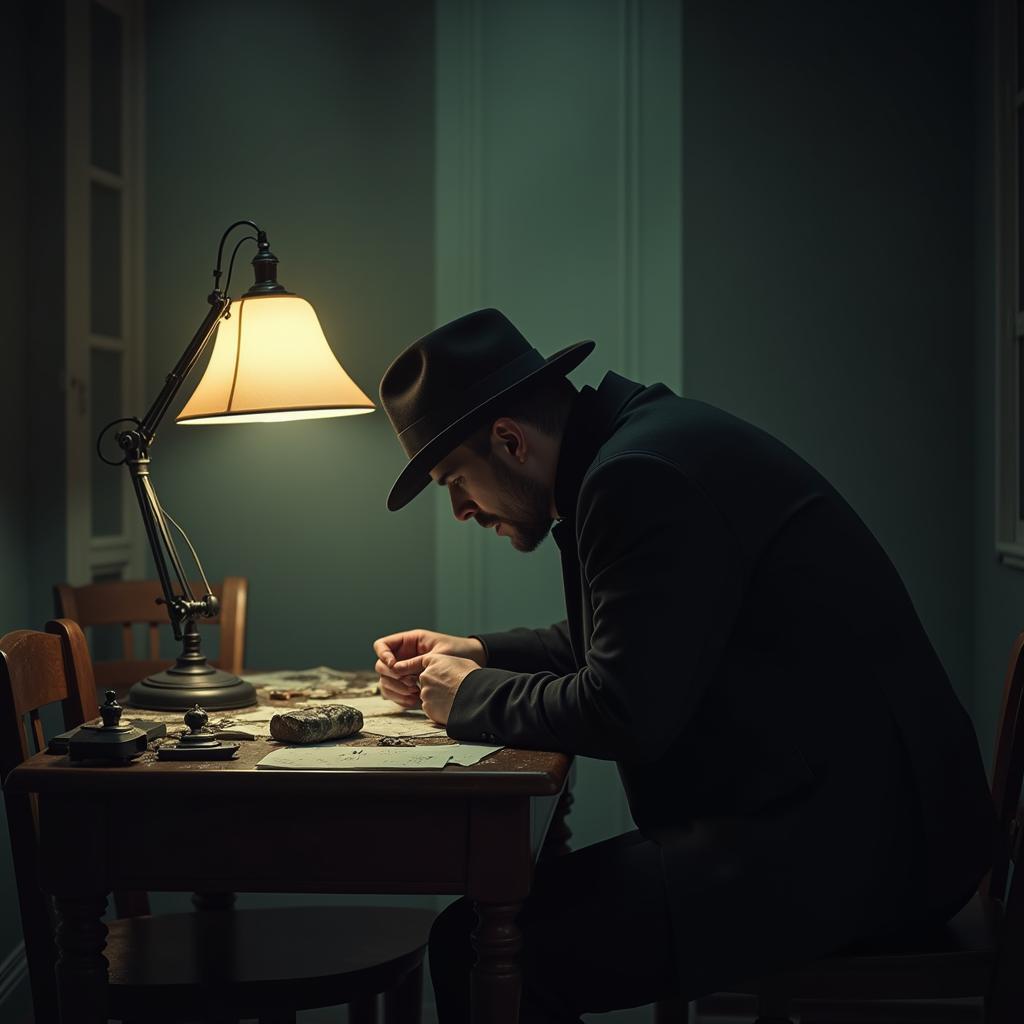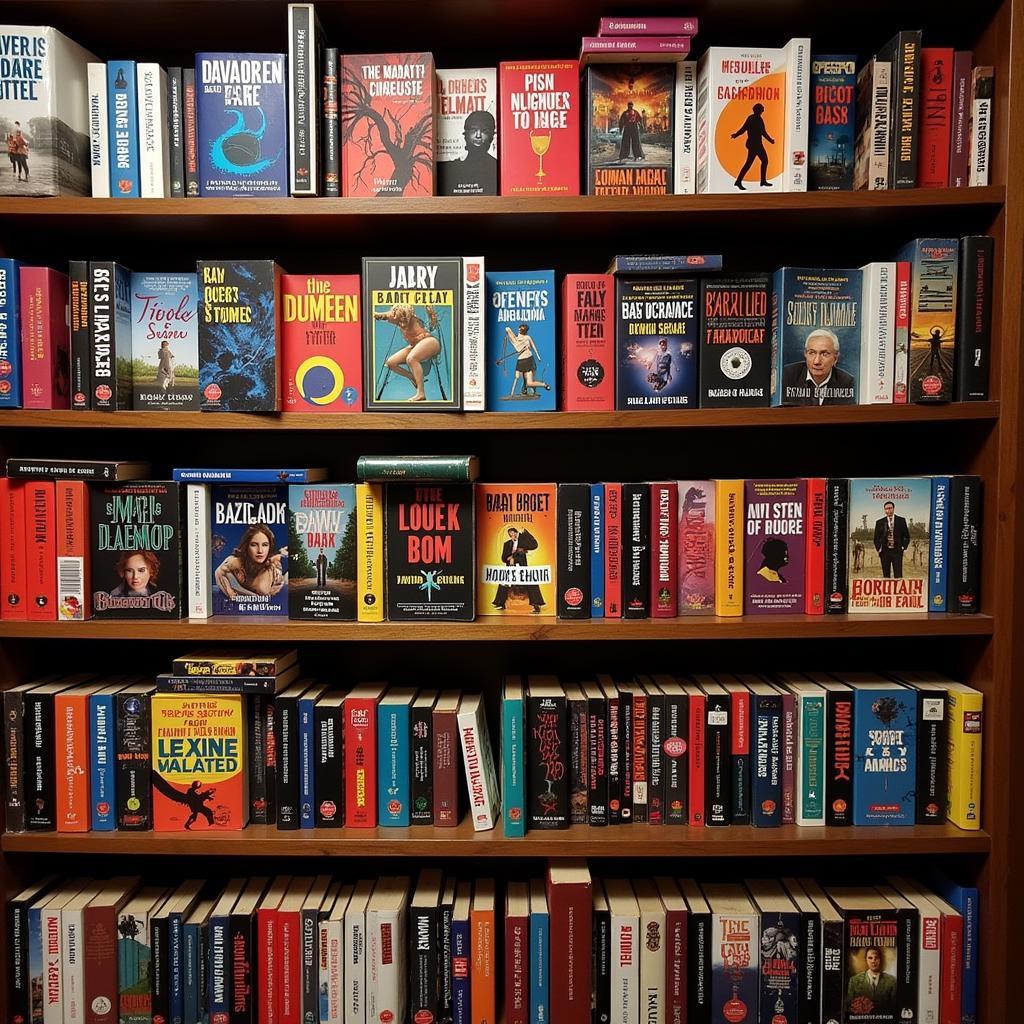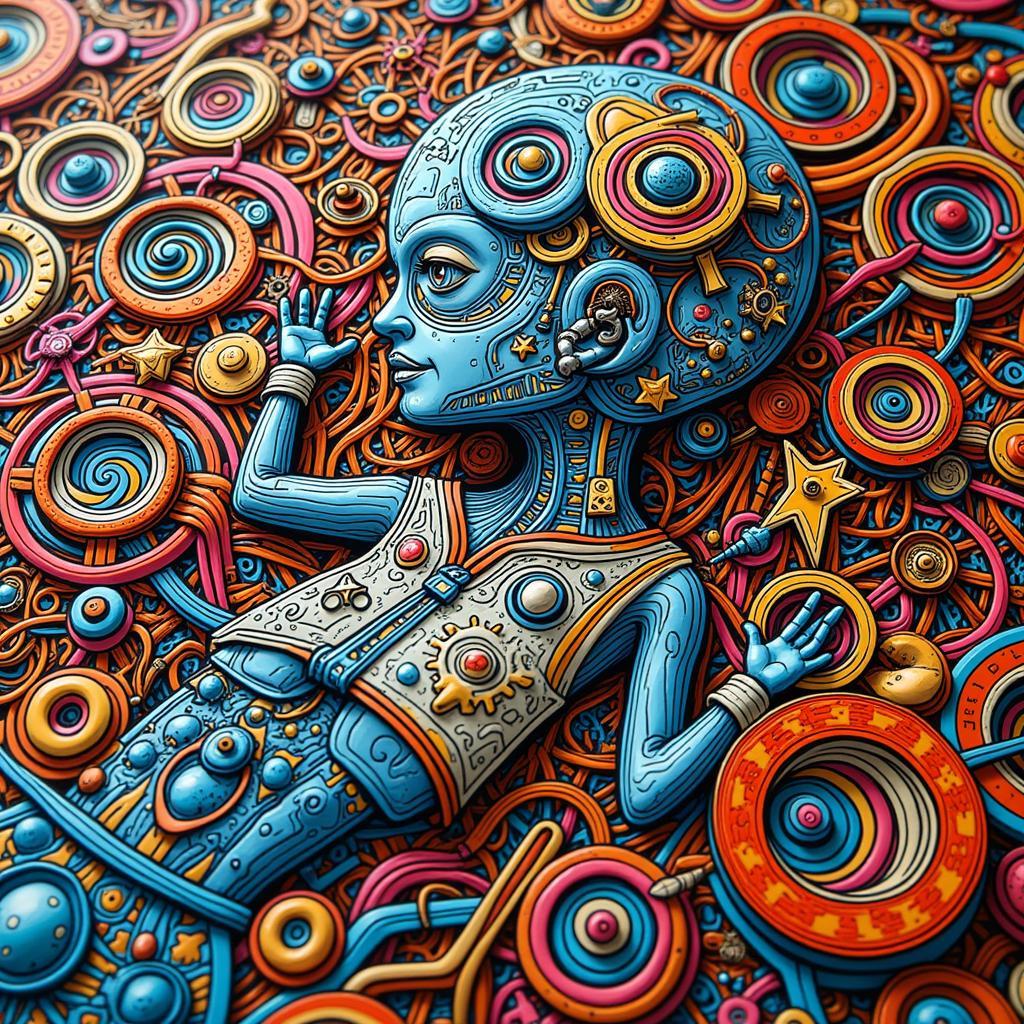Unmasking the Art of Murder Books
The Art Of Murder Book: a phrase that sends chills down your spine and sparks an insatiable curiosity. We’re not talking about a how-to guide for aspiring criminals, but rather a deep dive into the captivating world of murder mystery novels, thrillers, and true crime stories.
The Allure of the Macabre: Why Are We Drawn to Murder Books?
There’s an undeniable thrill in piecing together clues, unraveling motives, and entering the minds of both detectives and perpetrators. But what is it about these tales of death and deception that keeps us hooked?
 A detective meticulously analyzes evidence under a dim lamp, surrounded by files and photographs
A detective meticulously analyzes evidence under a dim lamp, surrounded by files and photographs
Perhaps it’s the intellectual challenge, the satisfaction of solving a puzzle alongside a brilliant detective. Or maybe it’s the glimpse into the darker side of human nature, the exploration of the motivations behind unthinkable acts. Whatever the reason, murder books offer a unique escape while simultaneously forcing us to confront our own mortality and the complexities of the human experience.
Dissecting the Genre: From Cozy Mysteries to Hard-Boiled Noir
The world of murder books is vast and varied, with subgenres to suit every taste. Let’s explore a few:
- Cozy Mysteries: These lighter reads often feature amateur sleuths solving crimes in quaint settings. Think Agatha Christie’s Miss Marple, unraveling murders in her idyllic village.
- Police Procedurals: Gritty and realistic, these stories follow law enforcement professionals as they navigate the intricate world of criminal justice. Think “Law & Order” or Patricia Cornwell’s Kay Scarpetta novels.
- Psychological Thrillers: Delving into the minds of both victims and perpetrators, these books keep you on the edge of your seat with suspense and mind games. Think Gillian Flynn’s “Gone Girl” or anything by Ruth Ware.
- Hard-Boiled Noir: With cynical detectives and femme fatales, these stories ooze atmosphere and explore the underbelly of society. Think Raymond Chandler’s Philip Marlowe navigating the dark streets of Los Angeles.
 Towers of murder mystery novels with intriguing titles and evocative covers line a bookshelf, showcasing the diverse range of the genre
Towers of murder mystery novels with intriguing titles and evocative covers line a bookshelf, showcasing the diverse range of the genre
Beyond Entertainment: The Cultural Impact of Murder Books
Murder books aren’t just a guilty pleasure; they often reflect and comment on the social and political landscapes in which they’re written.
- Social Commentary: Crime fiction can shed light on societal issues, such as corruption, inequality, and the justice system.
- Historical Context: Murder mysteries set in the past can offer glimpses into bygone eras and social norms.
- Psychological Insights: By exploring the minds of criminals, these books can provide a deeper understanding of human behavior.
The Art of Crafting a Killer Story: Elements of a Gripping Murder Mystery
What makes a murder book truly captivating? Here are a few key ingredients:
- A Compelling Mystery: The heart of any good murder book is a puzzle that begs to be solved.
- Intriguing Characters: Whether it’s a brilliant detective or a complex killer, memorable characters draw readers in.
- Suspense and Twists: A healthy dose of suspense, red herrings, and shocking revelations keep readers guessing until the very end.
- Vivid Setting: The atmosphere and location can be just as important as the characters themselves.
 An author diligently types away at their latest murder mystery novel, surrounded by research materials and fueled by coffee, hinting at the creative process and dedication behind crafting these intricate stories
An author diligently types away at their latest murder mystery novel, surrounded by research materials and fueled by coffee, hinting at the creative process and dedication behind crafting these intricate stories
The Art of Murder Book: A Genre That Endures
The enduring popularity of murder books is a testament to our fascination with the unknown, the dangerous, and the dark recesses of the human psyche. These stories offer escape, intellectual stimulation, and a lens through which to examine ourselves and the world around us. So, delve into the pages of a gripping murder mystery – you might just be surprised at what you discover.




